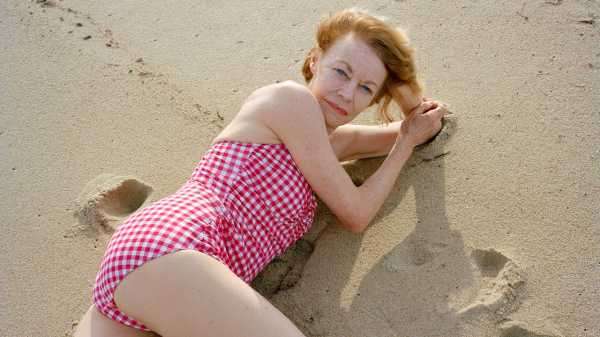
Some clichés about the cycle of life are true. When you are raising young children, the days are long and the years are short. And when you’re a woman, you will, at about age fifty, become invisible. All our lives, as girls and younger women, we prepare ourselves to be looked at. We grow accustomed to registering—to attracting, evading, or denouncing the male gaze. In “Mrs. Dalloway,” Clarissa, newly aware of herself as a woman of a certain age, walks down the street thinking, “This body, with all its capacities, seemed nothing—nothing at all.” The cultural critic Akiko Busch, quoting that line from “Mrs. Dalloway,” notes that “a reduced sense of visibility does not necessarily constrain experience.” True, but it takes some getting used to, and when it’s punctuated, as it often is, by condescension—when strangers are suddenly addressing you not even as “Ma’am” but, with a verbal wink, as “young lady”—you may not want to get used to it.

“Deborah at Aquinnah Beach in September,” 2020.
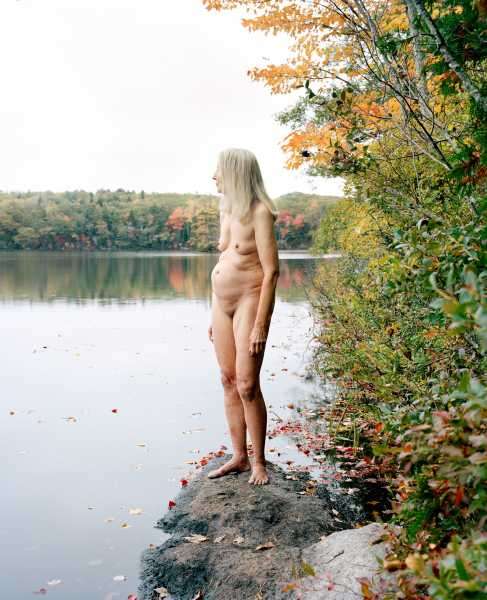
“Arifa,” 2019.
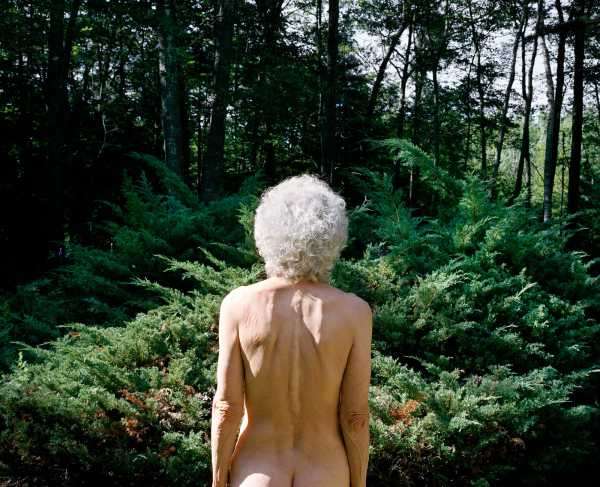
“Carla at Home in Maine,” 2020.
Is nakedness invisibility’s opposite? Maybe not, but, if it’s voluntarily, unapologetically displayed, it can be a kind of antidote to diminishment and erasure. A nude portrait of a woman older than, say, sixty is an unusual image—even a taboo one. To make such photographs, and, even more so, to pose for them, is an act of defiance. In the course of her career, the photographer Jocelyn Lee has been drawn to nude bodies of all shapes and ages. Her latest book, “Sovereign” (Minor Matters Books), features a selection of her photographs of women who range in age from their mid-fifties to their early nineties, posing naked, frequently outdoors and in natural settings.

“Lisa in St. George,” 2019.
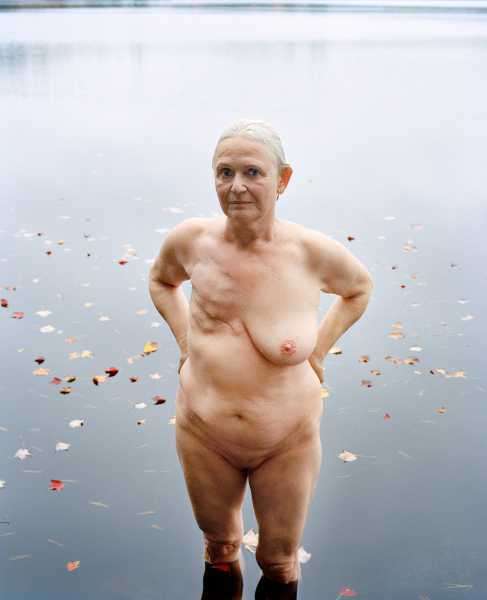
“Webber Pond,” 2019.
Lee’s color images of older women are painterly, classical, but also frank. Skin puckers, crinkles, and sags. Bellies poof and pleat. A silver-haired woman stands knee-deep in a pond strewn with autumn leaves, looking directly at the camera, her elbows angled back like wings to reveal one intact breast and one mastectomy scar. A naked woman sits on a blanket of moss in the woods, her breasts and belly soft, so at ease she might be napping. In “Nancy at 78, Maine at 18,” a woman and her grandniece stand nude on a beach. Side by side, their long-legged, curly-headed bodies rhyme, but also remind us of the ways time will remake our familiar, corporeal selves. The image is not some grim memento mori, though. The women lean comfortably toward each other, touching shoulders; the younger woman’s arm loops through the elder woman’s. Behind them, the sea and sky are a light-suffused blue.
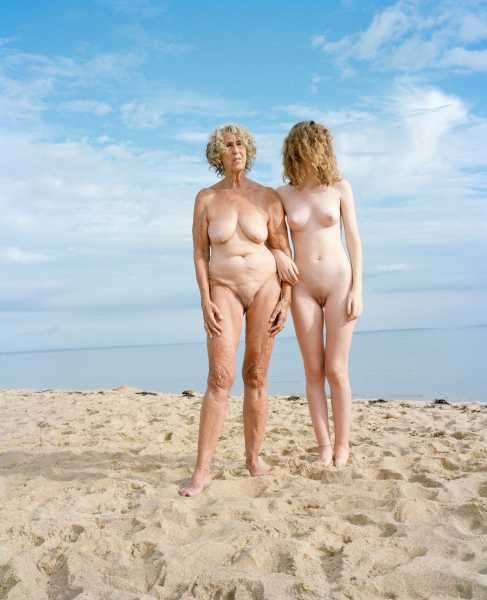
“Nancy at 78, Maine at 18 (Aunt and Grandniece),” 2018.
Lee, who is fifty-nine, lives part of the year on a lush, wooded property outside of Portland, Maine. She’s taken some of the portraits of older women at a pond near her house, and others on beaches at Martha’s Vineyard and elsewhere. The natural settings, devoid of sociological detail and inherently beautiful, tend to banish ironic readings and extend a certain benevolence to the naked subjects. We aren’t in paradise here—nobody in these photos looks that naïve—but we are not in any sort of judgment-laden social space, either. Lee told me that she hoped the locations implied the warmth of sun on the body—“that kind of comfort and love”—and communicated the idea that we are “all essentially sensual creatures.”
“The camera can be very cruel depending on how you use it,” she said. “There’s a whole tradition of photography that’s based on criticality and cruelty. Diane Arbus—whom I love, by the way—looked for unflattering moments to create a sense of drama. Sometimes that can be done with the juxtaposition of elements in a space, the exaggeration of the appearance of wealth or poverty, harsh lighting.”
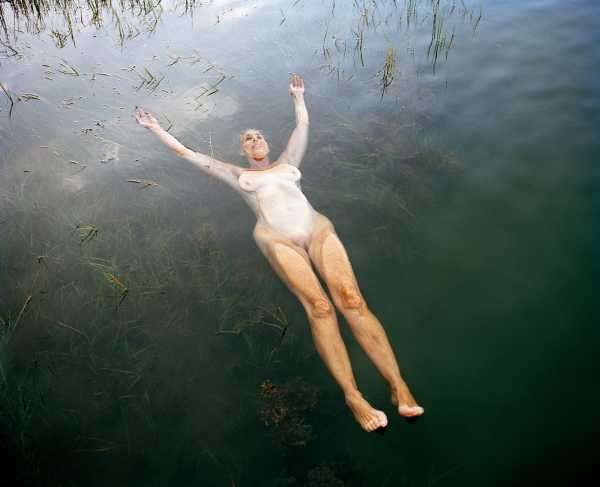
“Nancy Floating at Quitsa Pond,” 2016.
Lee said that, by contrast, her work had sometimes been criticized for being “too earnest or romantic.” But she made her peace with that a long time ago. Through her photography, Lee has always tried to understand “what lay ahead.” When she was still in college, long before she had children herself, she photographed a pregnant friend in the nude as part of her thesis project. “This was before the Demi Moore Vanity Fair cover; people didn’t really know what a pregnant woman looked like,” she said. Through the years, she took many nude photographs of her mother, who, she says, had a remarkable ease in her own skin. Lee continued taking pictures of her as she was dying of cancer.
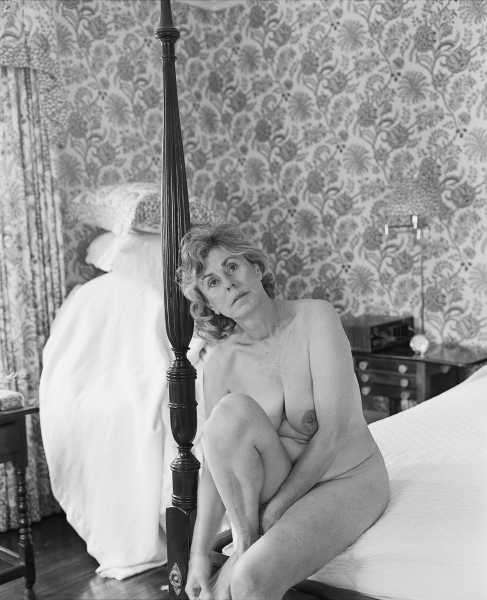
“Gayle Making Her Bed,” 1985.
I’m about six months older than Lee, and, all in all, I consider aging to be far better than the alternative, as my own mother, who died at sixty, the age I am now, used to say. Still, I prefer the cloudy mirror in my bathroom to any in which I can see myself clearly. The older women who posed for Lee in the nude include professors, writers, artists, an astrologer, a hospice worker, and a small-town mayor. To me, they seem very brave, but it bothers me to say so. We all have bodies; if we’re lucky, we all get old, or at least older. Why not show what it looks like?
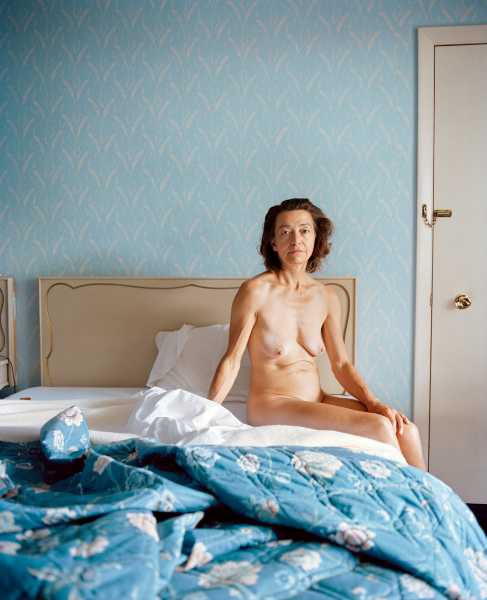
“Judith in the Motel Room,” 1999.
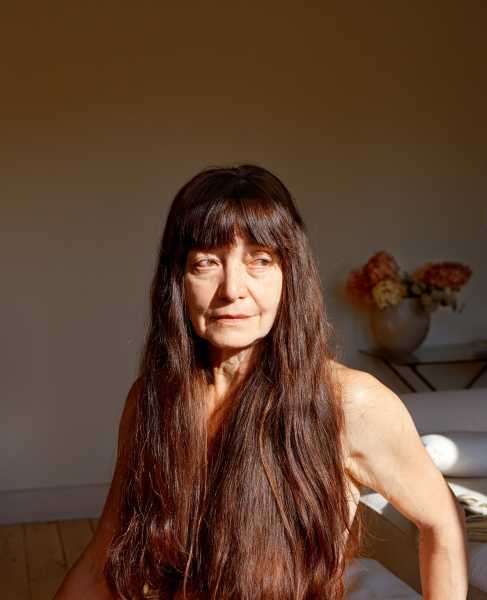
“Judith at Home,” 2009.Photographs by Jocelyn Lee
Two of Lee’s subjects, Judith and Nancy, have been posing for her for decades. Both told me that they don’t love how they look in some of the images, but that they treasured the experience of making them with Lee, whose process is creative and collaborative. Nancy, who is eighty, said, “I cringe when I look at the images, but I know that when I’m ninety I’m gonna say, ‘Ooh, look how great I looked!’ ” Her grandniece Maine, who posed with her, is a photography student. Maine told me that Lee’s image makes her happy because her grandaunt and she look so alike in it. “It’s like seeing myself in sixty years, and I sort of love that,” she said. “I think Nancy is beautiful.” Lee told me that she plans to photograph the pair every year.
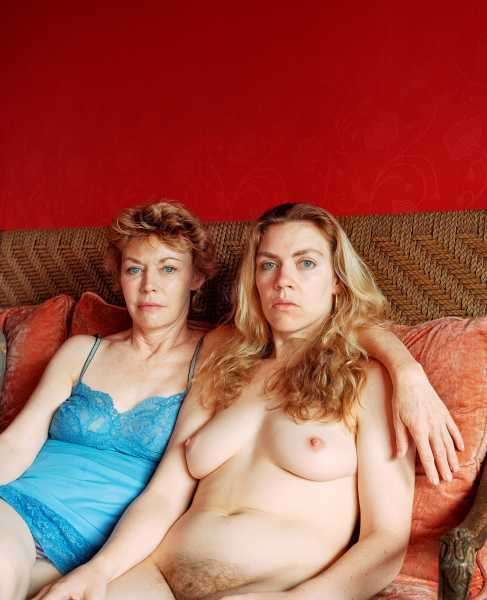
“Bebe and Pagan in the Red Room,” 2004.
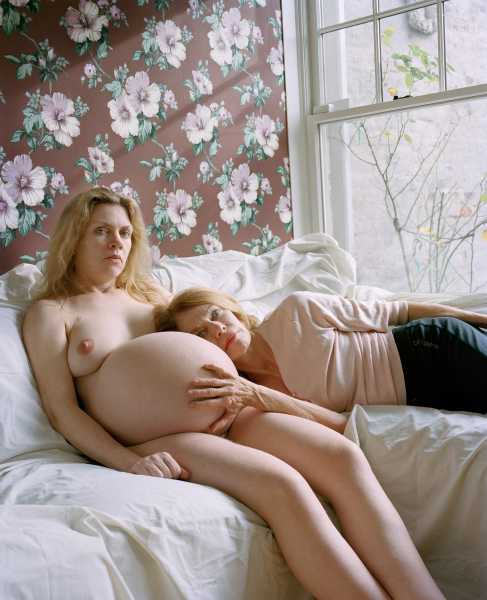
“Bebe and Pagan Pregnant with Twin Girls,” 2012.
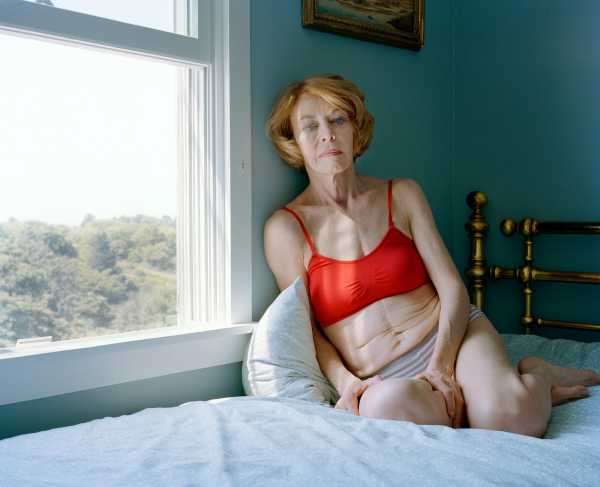
“Bebe in the Blue Room,” 2014.
New Yorker Favorites
- Why the last snow on Earth may be red.
- When Toni Morrison was a young girl, her father taught her an important lesson about work.
- The fantastical, earnest world of haunted dolls on eBay.
- Can neuroscience help us rewrite our darkest memories?
- The anti-natalist philosopher David Benatar argues that it would be better if no one had children ever again.
- What rampant materialism looks like, and what it costs.
- Sign up for our daily newsletter to receive the best stories from The New Yorker.
Sourse: newyorker.com






